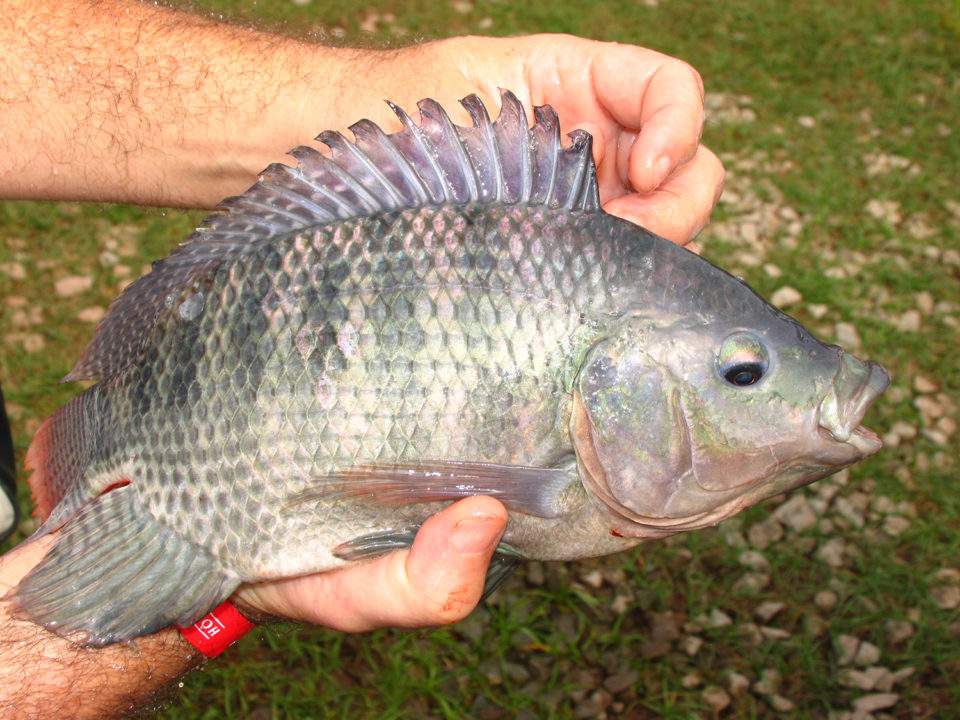Results show growth, feed utilization not compromised, other parameters affected

Dietary lipids cannot be replaced by other nutrients because they play important biological functions, are a major source of essential fatty acid and provide energy. Fish oil has traditionally been used as the major lipid component in fish feeds to provide essential polyunsaturated fatty acid (PUFA), especially highly unsaturated fatty acid (HUFA). However, limited output cannot meet the increasing demand of the aquafeed industry.
Vegetable oils are potential and suitable candidates to replace fish oils in aquaculture feeds because they have considerable production, acceptable prices, relatively low organic contaminant standing and relatively high content of unsaturated fatty acids. But the addition of vegetable oils to diets have resulted in a compromise in non-specific immunity parameters of some fish species like large yellow croaker and Japanese sea bass.
To our knowledge, limited information is available on the effects of replacing fish oil with palm oil on antioxidant capacity, immune response, digestive enzyme activities and resistance to the pathogenic bacterium Streptococcus iniae in tilapia. This article – adapted and summarized from the original publication (https://doi.org/10.1371/journal.pone.0196100) – presents the results of a study to determine the effects of replacing fish oil with palm oil on growth performance, antioxidant capacity, immune response, serum metabolites, digestive enzyme activities and response to the pathogenic bacterium S. iniae in juvenile Nile tilapia.
We are grateful to Prof. Song Zengfu of the National Pathogen Collection Center for Aquatic Animals (Shanghai Ocean University) for the provision of S. iniae. Shanghai Collaborate Innovation Center for Aquatic Animal Genetics and Breeding (ZF1206) and China Agriculture Research System (CARS-46) provided financial support for this study.

Study setup
Mixed sex Nile tilapia fingerlings were obtained from the Tilapia Germplasm Station of Shanghai Ocean University, China. Fish were sent to Shanghai Ocean University’s aquarium facility. where they were fed twice a day to apparent satiation on commercial diets (30 percent crude protein). Initial weight of fish was 9.34±0.02 grams. Twenty-four before the trial, fish were starved and distributed into their respective tanks (fiber glass tanks of 150×60×40 cm) at a stocking density of 40 fish per tank. Each group was then fed their corresponding diet for eight week, two times a day to apparent satiation.
Five diets; isonitrogenous (33 percent crude protein) and isolipidic (10 percent crude lipid) were formulated and manufactured for this study using commercial ingredients. The differences in diets were based on fish oil and palm oil inclusions. Fish oil (FO) was replaced with palm oil (PO) at 0 percent, 25 percent, 50 percent, 75 percent and 100 percent and designated as 0 percent PO, 25 percent PO, 50 percent PO, 75 percent PO and 100 percent PO, respectively. Protein sources were fish meal, rapeseed meal and soybean meal, with fish oil and palm oil as the lipid sources. Gross energy was estimated using the values of 23.6, 39.5 and 17.2 kJ per gram for crude protein, lipid and total carbohydrates, respectively.
For additional information on the feed and feeding trial; experimental procedures; sample collection and growth performance; fatty acid analysis of experimental diets, muscle and liver; digestive enzyme activity; serum metabolites; serum total protein, serum lysozyme and respiratory burst activity assay; measurement of antioxidant activities; bacterial challenge; and statistical analyses, please consult the original publication.
Results and discussion
Fish survival was 100 percent in all groups during the experimental treatments. The final body weight and body weight gain in fish fed the 50 percent PO diet was significantly higher than in 25 percent PO but was non-significantly different from other groups. However, there was no difference among groups for condition factor (K) among the different groups. There was no difference among groups with respect to feed intake and ranged between 76.27 and 77.19 grams.
Generally, the results of this study showed that PO inclusion had no negative impact on growth performance in Nile tilapia juveniles. This indicates that PO could be used to replace fish oil in O. niloticus diets, either partially or totally. The higher growth rate coupled with lower FCR recorded in fish fed 50 percent suggested that this PO inclusion could maintain normal physiological functions for Nile tilapia juveniles. The results of this study were similar to previous studies for juvenile Nile tilapia, juvenile Mozambique tilapia and common carp when dietary fish oil were substituted by vegetable oils at different levels.
Although fish fed diets containing 25 percent PO performed quite poorly in terms of weight gain and specific growth rate, these were not significantly different from results of groups fed diets containing 0 percent PO, 75 percent PO and 100 percent PO. This is because tilapia, like most fresh water fish, are known to have a greater requirement for omega-6 fatty acids predominantly found in vegetable oils as compared to omega-3 fatty acids, which are dominant in fish oil for proper growth. This is also because when essential fatty acid requirements are met, a significant proportion of dietary fish oil can be replaced by other lipid sources without any compromise in growth performance, feed intake and feed efficiency. There was no significant difference in FCR among different treatments, indicating that fish had similar ability with respect to feed digestion and converted the diets into body tissue with the same efficiency. The above results mean that using palm oil in place of fish oil in Nile tilapia has great potential to increase production, since growth performance would not be compromised.
Regarding enzyme activity, except for protease activity, which was not significantly altered, lipase and amylase activities were significantly altered when fish oil was replaced with palm oil. There were no significant differences among treatments for superoxide dismutase, catalase and lysozyme activity. From our results, we conclude that feeding tilapia fingerlings with diets containing palm oil affects antioxidant and innate immune parameters negatively due to the reduction in the activity of several enzymes.
Replacement of fish oil with palm oil did not significantly influence the resistance ability of Nile tilapia juveniles. This agreed with a previous study where dietary lipid levels had no effects on the resistance of Nile tilapia to pathogenic bacterium Streptococcus iniae infection, which can cause serious mortalities in fishes. Our results show that replacing fish oil with palm oil would not improve resistance, but would also not compromise the ability of Nile tilapia juveniles to fight S. iniae infections.
Perspectives
Results of our study demonstrated that fish oil could be replaced with palm oil without distinct compromise in growth performance as well as feed utilization in Nile tilapia juveniles. However, the nutritional and health benefits of feeding O. niloticuswith diets with higher levels of PO (75 percent PO and 100 percent PO) are reduced due to the decrease in the omega-3 fatty acids EPA and arachidonic acid, with a corresponding increase in omega-3:omega-6 ratios.
Our results show that feeding tilapia fingerlings with diets containing palm oil can negatively affect some antioxidant and innate immune parameters because of reduced activity of several enzymes. And replacing fish oil with palm oil does not compromise the ability of Nile tilapia juveniles to fight S. iniae infections.
Now that you've finished reading the article ...
… we hope you’ll consider supporting our mission to document the evolution of the global aquaculture industry and share our vast network of contributors’ expansive knowledge every week.
By becoming a Global Seafood Alliance member, you’re ensuring that all of the pre-competitive work we do through member benefits, resources and events can continue. Individual membership costs just $50 a year. GSA individual and corporate members receive complimentary access to a series of GOAL virtual events beginning in April. Join now.
Not a GSA member? Join us.
Authors
-
Dr. Christian Larbi Ayisi
Key Laboratory of Freshwater Fishery Germplasm Resources
Ministry of Agriculture
Shanghai Ocean University
Shanghai, P.R. China -
Dr. Jinliang Zhao
Key Laboratory of Freshwater Fishery Germplasm Resources
Ministry of Agriculture
Shanghai Ocean University
Shanghai, P.R. China -
Dr. Jun-Wei Wu
Key Laboratory of Freshwater Fishery Germplasm Resources
Ministry of Agriculture
Shanghai Ocean University
Shanghai, P.R. China
Tagged With
Related Posts

Aquafeeds
Animal protein meals reduce feed costs but don’t improve shrimp performance
The authors conducted a study to determine how replacement of salmon meal with various animal protein meals in feed affected the growth performance of white shrimp.

Aquafeeds
Alternative lipids spare fish oil in rainbow trout feeds
Alternative lipids have achieved varied success in ensuring adequate growth and fatty acid composition in fillets. The authors evaluated rainbow trout raised on diets containing fish oil or a blend of fish and standard or modified lipids varying in fatty acid composition.

Aquafeeds
A push for rapeseed as a viable aquafeed ingredient
One Germany-based company says rapeseed protein concentrate, or RPC, can help aquafeed manufacturers meet growing demand.

Health & Welfare
Algae shows promise as alternative DHA source in rainbow trout diets
A growth trial in Canada evaluated the use of algae biomass to increase the concentration of long-chain polyunsaturated fatty acids in the tissues of rainbow trout.


